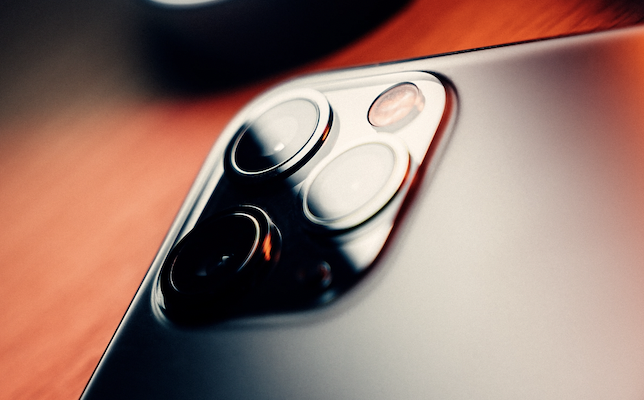The future of touchscreens and gesture control. A virtual typing experience.

Touchscreens are everywhere. From living rooms to malls and everywhere in between, we encounter them on a daily basis. Considering how touchscreens are literal touchpoints between the user and a service they use, the user experience with touchscreens has a bearing on their impression of a particular brand or service.
What does Industry 4.0 have in-store for touchscreens?
Features like intuitive gesture control and autocorrection available for an impressive list of languages makes especially the Android SDK keyboard integration a compelling option for smart TV typing, often powered by AOSP. On a broader level, completely secured privacy settings are put in place to protect users from keystroke monitoring and recording, which means that business related data and passwords are not exposed to risk while using the software.
Whether at home or outside, users’ expectations from brand interactions have been setting new standards for brands and developers to keep up with. Keyboard integration makes technology more inclusive by making something as routine as smart TV and common screen interactions accessible to users of different ages and abilities.
With technology of this potential, keyboard developers could also ensure that dynamic gesture control is in line with touch-based surfaces, with respect to virtual keyboard layouts and naturality, thereby saving the trouble for end-users to relearn aspects they are much used to.

As we’re exploring the rapid change to technology, especially across the Software industries, there’s a strong notion that the dynamics in how people interact with touchscreens – mainly in the way we type – are shifting. Gesture Control is a key consideration that virtual keyboard developers need to be aware of as we’re stepping into Touchscreen 4.0.
Immersive technologies and the future of swipe input
A closer observation of our typing habits seem to indicate that we don’t type in static movements. There is a rhythmic flow in movement and in pace. Irrespective of whether we are using a computer or a smartphone, the typing experience could make or break our overall experience with the touchscreen or typing area.
Immersive technologies like Virtual Reality (VR) and Augmented Reality (AR) are no longer a thing of sci-fi, they are integrated in everyday life. With these technologies influencing more practical spheres of life, it also means that typing experiences are no longer limited to the ways we are used to. Typing on smartphones and keyboards in a way we are used to our entire lives, only to learn an entirely different way of typing in AR or VR, is easier said than done.
As touch-based services become more interactive and even more intuitive, the gestures people make to type are shifting towards more fluid movements. On this, typing interactions with virtual keyboards are reaching new heights when it comes to, amongst others, augmented realities.
Could this mean no more physical touchscreens?
Our interactions with touchscreens go beyond the comfort of our homes, to places we frequent, like malls, cafes and bus stations. More often than not, we depend on them either for information or to avail services. In spite of their usefulness and versatility, apprehensions regarding touchscreens range from privacy concerns to hygiene issues. Given that common touchscreens are shared by multiple users, undesirable elements like bacteria and germs could easily be passed from person to person.
These potential risks could discourage users from engaging with common screens. Due to this, Industry 4.0 could potentially mean more touchscreen-less, virtual, typing experiences.
Typing experiences in virtual (VR) and augmented realities (AR).
Fundamentally, AR uses real-world settings while VR uses completely virtual or fictional settings. VR is a completely immersive experience that transports you into an altogether different reality, virtually, replacing your surroundings. No physical touchscreen is needed to type here. Augmented Reality, on the other hand, adds or augments your surroundings instead of replacing them. AR glasses are smart glasses allowing you to see through, designed for free movement, simultaneously projecting an overlay of information including images, over whatever you choose to look at.
This concept has started with smartphones and this concept is popularly extended to smartphones through AR apps and games, using the phone camera to track your surroundings.
It can be argued that the principles of VR offers a better case scenario for a keyboard typing experience and gesture control without breaking the virtual immersion. The glasses can represent the physical keyboard in the virtual space with the same layout. This also ticks the box for ergonomics. Typing in this case, can be further enhanced by features like next word predictions, that are available at the user’s disposition, enabling them to just pick words using their fingers on the virtual keyboard.
Swipe input is the way to go in AR.
Apart from being an intuitive way of typing in AR, swipe typing allows users to move around freely without having to carry around another device for text input. Most importantly, it is ergonomic and sustainable in the long run as users don’t have to learn their way through new, unfamiliar layouts but can be comfortable with their interactions- physically and cognitively.
In conclusion, Touchscreen 4.0 is expected to become a prominent reality in the near future. In this reality, we could likely find ourselves typing on a projected keyboard while on the go – with no physical touchscreen in sight. Getting this right could take any touchscreen experience from being merely transactional to truly exceptional in Touchscreen 4.0.